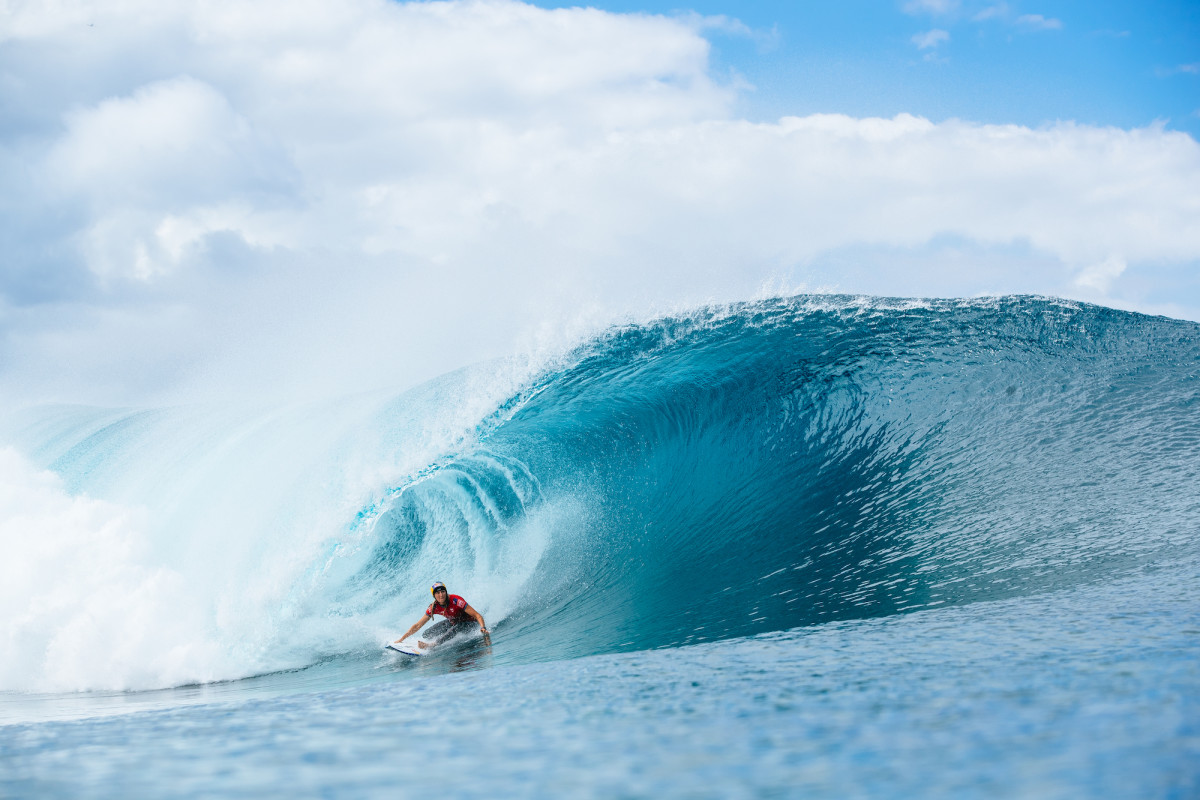
Photo: WSL/Tony Heff
Molly Picklum rose at dawn and peered out at Pipeline from the second-story balcony of the Rip Curl house. She watched lines mounting from the black abyss of the early morning Hawaiian horizon, then waves, marching towards the famed reef like a valiant troop of soldiers approaching a battlefield – feathering, cresting, and detonating.
“It was solid,” the Australian surfer recalled after the historic day of women’s surfing. “It was a little bit rogue at the start. But I was just excited to surf Pipe and have it to ourselves for the day. I wanted to make as many heats as I could, because I wanted to get barreled as much as I could.”
She grabbed the biggest board she could find and paddled out.
It was finals day at the Lexus Pipe Pro, the kickoff event to the World Surf League’s 2024 Championship Tour season. And that day, women’s surfing changed forever. But that change had been brewing, festering even, long before. That day, the women arrived at Pipeline; but they’d been knocking on the door for decades, just waiting, patiently, for someone to finally let them in.
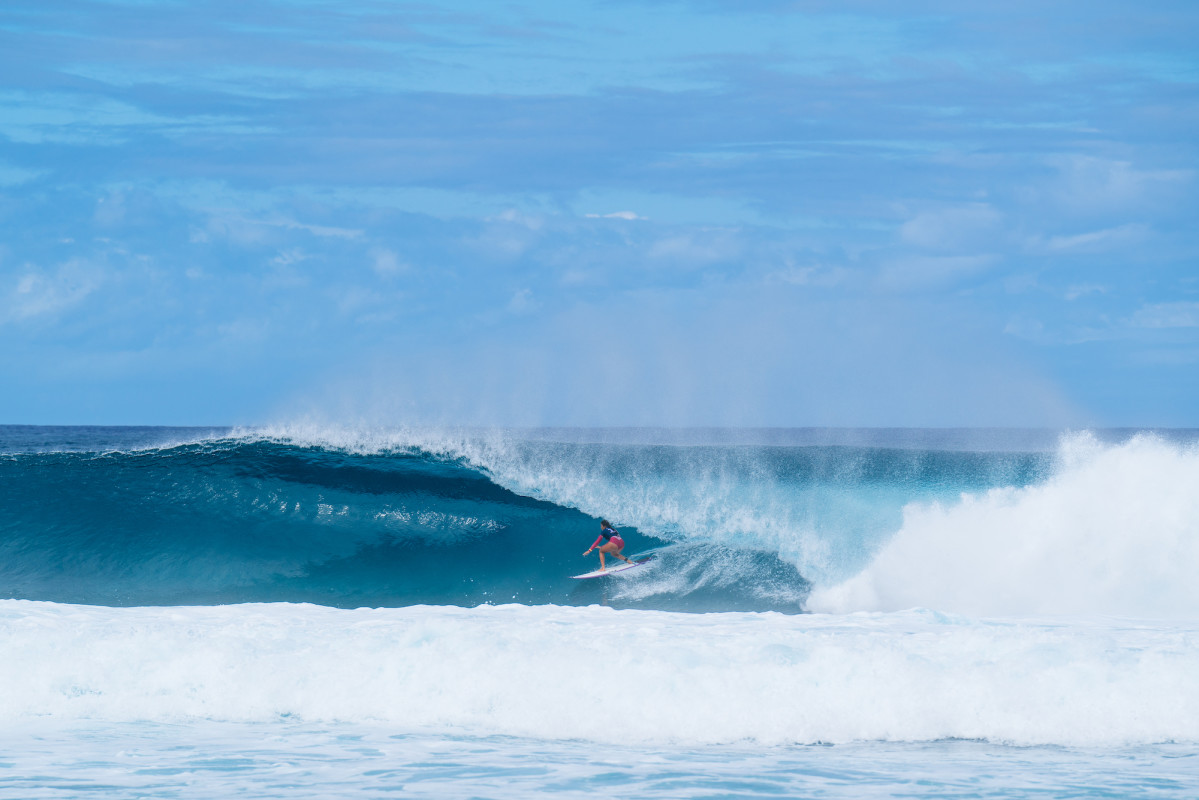
Photo: WSL/Jesse Jennings
“That may have been one of the best days of conditions at Pipe in the last few years,” five-time world champ Carissa Moore, who surfed her last Pipe Pro as a full-time competitor in 2024, noted. “I think more and more women have the talent, ability, and mindset to put on a show at Pipe, but for the conditions, the crowds, and everything to come together like it did…it’s so rare. I think if the women had more days like that, the world would continue to be blown away.”
As the day transpired, a crew of young, hungry, and fearless females would make history, putting down the best performances ever seen at Pipeline in their gender class. Picklum surfed the first-ever Perfect 10 by a woman in a WSL event at Pipe; Hawaii’s Bettylou Sakura Johnson dominated at both Pipe and Backdoor; and 18-year-old Caitlin Simmers, a freckle-faced sprite from Oceanside, California, would win the event, proclaiming to the world, casually yet with resounding authority, in the ultimate mic-drop moment: “Pipeline’s for the fucking girls.”
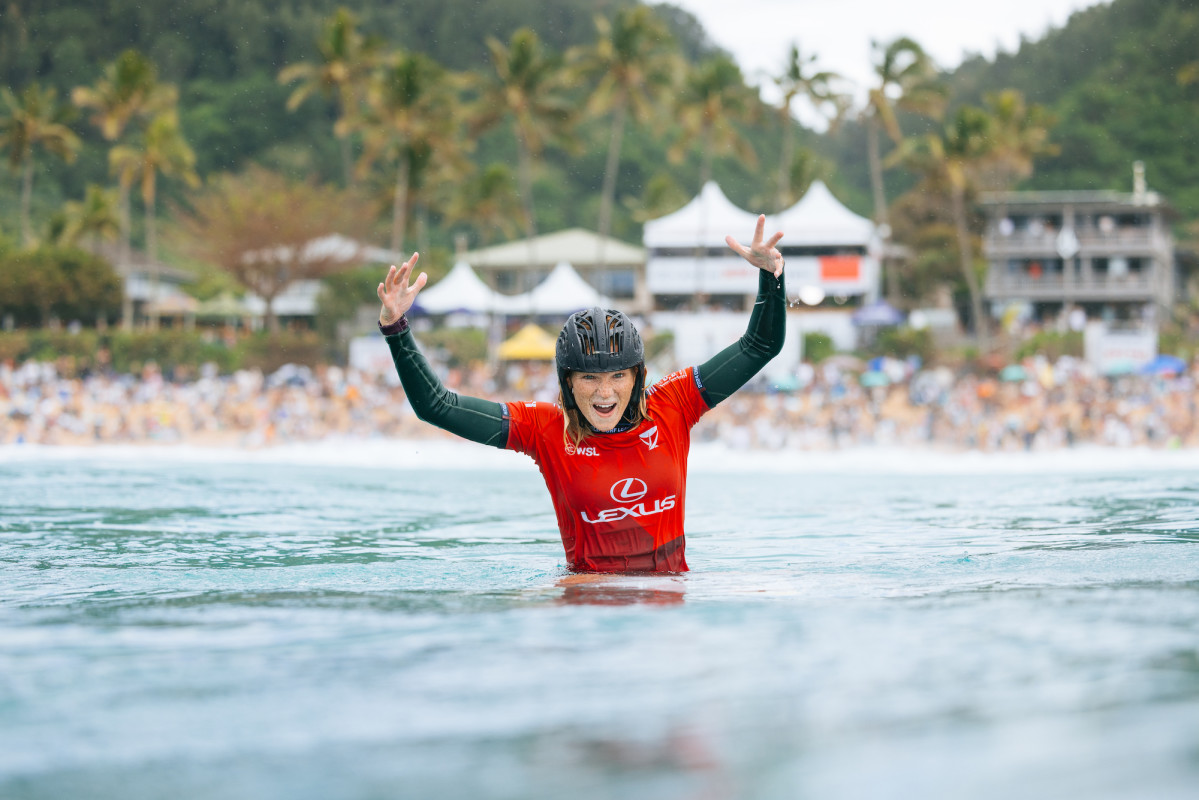
Photo: WSL/Brent Bielmann
It was a tectonic shift in surfing. The women, finally, had their day at Pipe. A good day. It wasn’t the typical leftovers they get served from the men’s division. It was big, perfect, proper Pipe.
And it wasn’t just Pipe, either. The train of female progression in professional surfing chugged throughout the year, with many even calling the women’s circuit more exciting than the men’s. There was Picklum’s haymaker shortly after Pipe at Sunset (a near-perfect 10 for one single maneuver); there was Moana Jones Wong’s arguable Wave of the Winter at Pipe (“That would’ve been a 12,” commented Selema Masakela. “Incredible.”); there was Tatiana Weston-Webb’s Perfect 10 at the Tahiti Pro (“Quite possibly one of the best barrels ever ridden in competition,” the WSL mused.); and many more groundbreaking, glass-shattering moments in between.

Photo: ISA/Tim McKenna
Then, of course, there was the Olympics. Although the women didn’t get a crack at Chopes on the Day of Days, they did not hesitate in sizable surf, and they showed the world (not just the surf world, but the actual world) the level of talent they’re working with. As Carissa Moore closed out her competitive career, then, characteristically, composed herself through the tears to address all the aspiring young female surfers out there in the world, she said:
“I wouldn’t have had it any other way. I would’ve been so bummed if I looked back and had done this halfheartedly. I went all in. And I just hope that at the end of the day, I can encourage whoever’s watching — win or lose.”
The year, in professional surfing, went to the women. Hands down. About damn time.
So, why now? What took so long? Was it surfing’s prevalent “boy’s club” mentality, particularly at waves of consequence, which held the women back? Yes, in part. But there’s more to the story.
First of all, it was a matter of opportunity. Or, rather, lack thereof. It wasn’t until 2020, when a tragic, fatal shark attack on a freesurfer at the women’s usual Hawaiian event location – Honolua Bay on Maui – forced the WSL to make a decision. Put the surfers out in the water following the attack? Increase shark surveillance? Cancel the event? Or move locations?
They chose the latter; they chose Pipe. And there they’ve been ever since. But never in good, solid waves. Which speaks to the second reason why women’s progression at Pipe was stalled. Pipeline, after all, is notoriously one of the most difficult lineups in the world. There’s a pecking order. The locals hold it down. It takes time to earn one’s spot. Time the women never had.
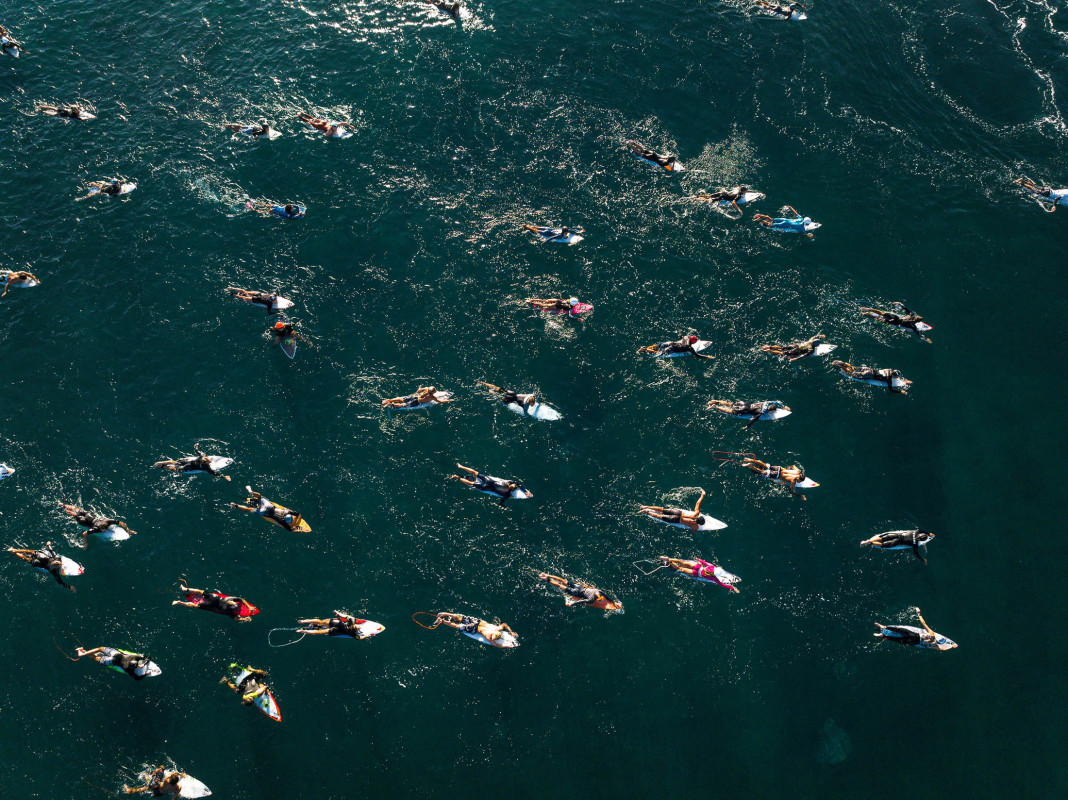
Photo: Ryan "Chachi" Craig
“You have to have a lot of tenacity, a lot of patience, you have to really, really want one,” said Coco Ho, Hawaiian royalty, former CT surfer, and one of the foremost females at the wave. “What girl wants to sit out there and be, like, 20th in line? Clearly everyone has the talent to go and do it. We’re not lacking in that department. It was just a matter of having the opportunity.”
Lest we forget, however, the women who came before – the ones who were charging Pipe and Backdoor decades ago, despite no CT event, despite the aggro, even more so male-dominated lineup of yesteryear. Women’s surfing at Pipeline is not new; it’s just taken time to mature.
“It’s like the jungle out there,” said Rochelle Ballard, one of the pioneers of modern female surfing at Pipe and Backdoor. “The lions are the ones eating. It’s always going to be the gnarliest alpha male guy who gets the best wave. It’s just so difficult as a woman to get waves out there. It’s like, ‘girls surf here, and guys surf here.’ That was the attitude. But myself, and a couple of the other girls at the time, we were like, ‘fuck that. We’re going out.’”
Back in the late ‘90s and early aughts, Rochelle was breaking boundaries at Pipeline. She, along with a handful of her peers – including Keala Kennelly, Lisa Anderson, and Layne Beachley – were paddling out amongst the men, figuring out the wave, getting their reps in, taking their lickings like everyone else, and laying down a foundation for what was to come.
“Somebody’s got to grate the road, draw the lines, and pave it,” said Rochelle, “then others can drive down it. There were no roads for women. 20 years later, here we are. All of a sudden, there’s these girls – there’s Moana, and Molly, and Bettylou, and Caitlin – and they finally have the opportunity out there. I can just see it in their eyes. They want it.”
Famously, Rochelle stunt-doubled for Kate Bosworth in the 2002 Hollywood film, Blue Crush, which, probably not by accident, reflects the real-life evolution of women’s surfing at Pipe. Bosworth plays an up-and-coming surfer. Her male counterparts tease her. Yet she’s determined.
“What’re you girls doing here?” chirps one of those men, played by actual North Shore heavy (at least, at the time of the film) Kala Alexander, in one pivotal scene.
“Same thing you are,” responds one of Bosworth’s friends, “we’re here to surf Pipe.”
Flashforward two decades, in 2022, and the momentum for modern female progression at Pipeline revved up again. That’s when – like the movie – a local, little-known surfer entered the WSL’s event, and blew everyone else out of the water. That surfer was Moana Jones Wong.
“I came into that event as a wildcard,” said Moana, “so only people from Hawaii really knew who I was. Everyone else was surprised. Nobody from Hawaii was surprised. They were, like, ‘she does this all the time. It’s nothing new. We’ve watched her do this for years. She just never got the recognition.’ There wasn’t a contest at Pipe, so nobody was really paying attention.”
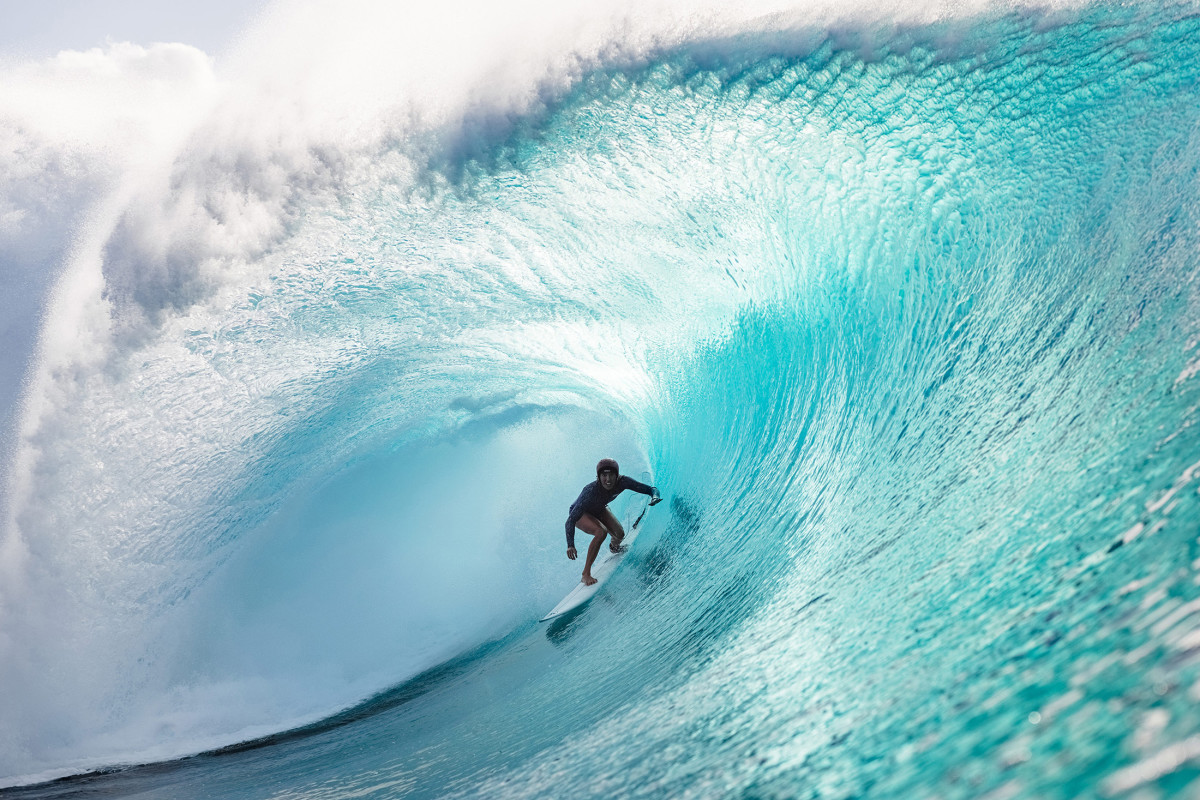
Photo: Ryan "Chachi" Craig
After that performance, she was dubbed “the Queen of Pipeline.”
And after the 2024 Tahiti Pro, local girl Vahine Fierro was knighted “the Queen of Teahupo’o.”
It was like, at long last, the chosen ones had risen, the prophecy fulfilled, the dragon slayed. But anyone with a smidgen of surf history bouncing around their amygdala knew that this saga was a long time in the making. In pre-contact Hawaii, women were oft considered the most graceful wave-riders, and surfing was a pastime reserved mostly for royalty. So, there were queens before – maybe not at Pipe on a board built from wiliwili wood – but they were there, and the elders (and history books) honor them. And the best part? There will be more to come.
As longtime surf journalist and historian Jim Kempton writes in his book, Women on Waves:
“What is it about the surfing that intrigues people of all ages, from all corners of the world? The beaches and idyllic locations? The unique style and mystique that surfers project? These women, on the beach and riding giant waves, or in the media, have made their mark on not just their sport, but our wider culture.”
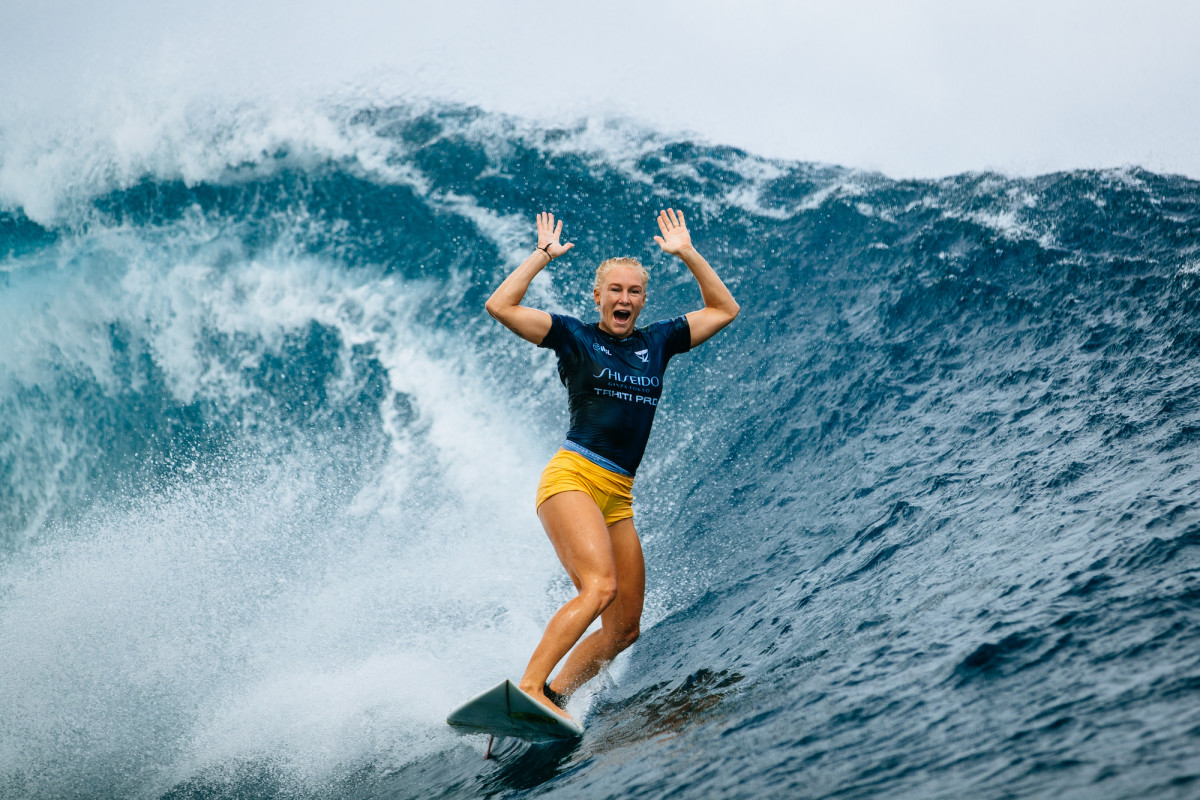
Photo: WSL/Ed Sloane
The legend lives on. A new era has dawned, and there’s no fairytale ending in sight.
“After that moment, women’s surfing is being taken a lot more seriously,” Picklum said about the 2024 Pipe Pro. “That day started a fire. I don’t think anyone can really picture what the future of women’s surfing will look like, but we can all agree that it’s headed in the right direction.”

